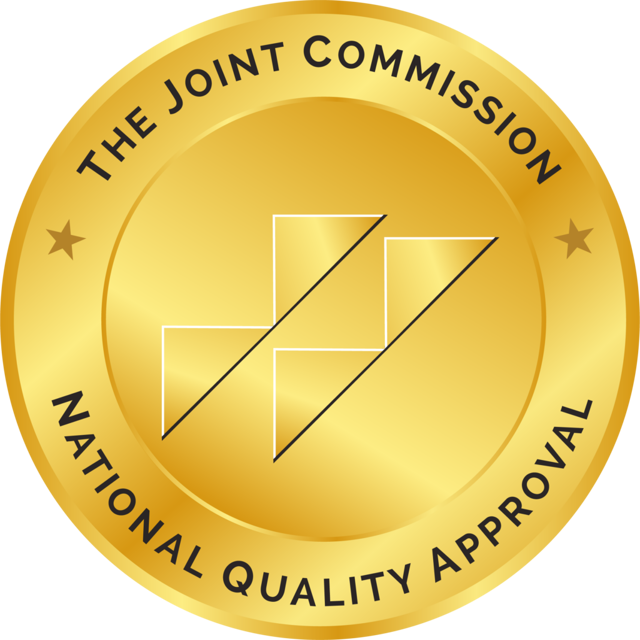
Specialty Care
Infusion treatments, whether at home, in a healthcare clinic or other non-hospital setting, require highly trained Specialty Care nursing and pharmacy support. Trust becomes essential for these higher-risk infusion therapies that require ongoing care.

Clinical Nutrition
Nutrition plays an essential role in sustaining quality of life for those who require care for complex conditions. Pentec Health provides personalized clinical nutrition solutions and superior community-based care.

Disease States
Managing the multifaceted needs for a variety of conditions requiring clinical nutrition and specialty care therapies, services and products. This includes patients with kidney disease, kidney failure, chronic, non-healing wounds, gastrointestinal conditions, rare metabolic disorders, chronic pain, muscle spasticity or cancer within or that has metastasized in the liver.

Continuing Education
By leveraging decades of clinical expertise, we are able to successfully demonstrate our industry leadership through webinars, speaker programs and research studies. We take pride in sharing valuable insights that enhance clinician education and practice.

Patient Resources
We are committed to supporting patients by empowering them with knowledge and resources needed to navigate their healthcare journey with confidence.

Pentec Health
Pentec Health is a national leader in clinical nutrition and specialty care integrating pharmacy services with clinical excellence to enhance the complex care journey.

Rare Disease Spotlight: Tyrosinemia type 1
Rare disease spotlight: Tyrosinemia Type 1
Tyrosinemia Type 1 (TYR), also known as fumarylacetoacetase (FAH) deficiency, is a rare inherited disorder that affects the body's ability to break down the amino acid tyrosine. Amino acids are the building blocks that make up proteins, but when the body can't process them correctly, they can build up and cause serious health issues. For individuals with TYR, this buildup can lead to severe liver disease as well as problems with the kidneys and central nervous system. TYR is a lifelong condition that typically affects infants and young children. Globally, it is estimated to affect 1 in 100,000 individuals, classifying it as a rare disease.1
The Genetic Basis of Tyrosinemia Type 1
Like many inherited metabolic disorders, TYR follows an autosomal recessive inheritance pattern. This means that a child must inherit two copies of a mutated gene, one from each parent, to develop the condition. Parents who carry only one copy of the gene typically show no symptoms themselves. When both parents are carriers, there is a 25% chance with each pregnancy that their child will have TYR.2


The mutation affects a gene responsible for producing FAH, an enzyme that is essential for breaking down tyrosine. Without this enzyme, tyrosine is not correctly broken down, instead accumulating fumarylacetoacetate, succinylacetoacetate, and succinylacetone, toxic byproducts that cause damage to organs and tissues, leading to the health complications associated with the disorder.
Symptoms and Diagnosis
The symptoms of TYR can vary greatly from person to person, and the disorder typically presents in either an acute or chronic form.
The acute form is more common and severe, with a rapid onset of symptoms at birth or within the first few months of life. Infants may initially show a failure to thrive (problems gaining weight and growing), along with fever, diarrhea, and vomiting. As the condition progresses, other signs appear, including an abnormally enlarged liver (hepatomegaly), jaundice (yellowing of the skin and eyes), and a tendency to bruise easily. Some infants may also have a distinctive, cabbage-like odor. If not treated, this form can quickly lead to life-threatening liver failure.
The chronic form has a more gradual onset, with symptoms that may not become apparent until after six months of age. Failure to thrive is often the first symptom, followed by developmental delays and the progressive scarring of the liver (cirrhosis).3
Beyond these initial symptoms, TYR can lead to other serious complications:
- Kidney Abnormalities: Many infants develop kidney issues, such as Renal Fanconi syndrome. This condition impairs kidney function and can lead to the softening and weakening of bones (rickets).
- Neurological Crises: Some infants experience episodes of severe pain in the legs and abdomen, increased muscle tone, vomiting, and high blood pressure. These crises are often triggered by a minor infection.
- Increased Cancer Risk: Individuals with TYR have a greater risk of developing a type of liver cancer known as hepatocellular carcinoma, especially if the condition is not managed effectively.
Fortunately, TYR can be identified through newborn screening programs. If the initial screening suggests TYR, a diagnosis is confirmed through further specialized tests and a detailed clinical evaluation. Because the disorder can progress quickly, early diagnosis and immediate treatment are critical to preventing irreversible organ damage and supporting healthy development.3
Treating Tyrosinemia Type 1
While there is currently no cure for TYR, it is a highly treatable lifelong condition. Modern treatment has improved survival to over 90% and allows individuals to have normal growth and improved liver function. Management is a lifelong commitment that involves a combination of medication, a special diet, and regular monitoring by a specialized care team.
A key part of the care team is a nutritionist skilled in managing inherited metabolic disorders that require a low protein diet.
Nitisinone, the cornerstone of treatment
The primary treatment for TYR is a medication called nitisinone. Available under brand names like Orfadin® and Nityr®, this drug is approved by the FDA and has revolutionized the management of the condition.3
Nitisinone works by blocking a step in the process that breaks down tyrosine. This action prevents the body from creating and accumulating the toxic substances that cause severe liver and kidney damage. Treatment with nitisinone should begin as soon as a TYR diagnosis is confirmed to prevent primary health issues. The dosage is carefully adjusted for each person based on their weight and regular blood tests.
Essential partnership: a specialized diet
Nitisinone must be used in combination with a diet that is restricted in two amino acids: tyrosine and phenylalanine. This special diet is necessary because the medication causes tyrosine levels in the blood to rise, which can lead to tyrosine crystals forming in the eyes and causing issues like light sensitivity.2
Dietary management should also start immediately upon diagnosis. The diet typically includes:
- Controlled intakes of phenylalanine and tyrosine using a vegetarian-style plan with special low protein foods.
- Special medical foods and formulas to ensure a nutritionally complete diet that provides the protein and energy needed for healthy growth and development.
Physicians recommend that individuals follow this strict diet for their entire lifetime.
For severe cases
Before nitisinone became available, a liver transplant was the only definitive therapy for TYR. Today, it is reserved for children who have severe liver failure when they are diagnosed and do not respond to nitisinone, or for those who have developed liver cancer.
While it can be a life-saving procedure, a transplant carries risks and requires the recipient to take long-term immunosuppressant medications.
Managing other health issues
Comprehensive care for TYR also involves preventing and managing secondary complications. Since TYR can affect the kidneys, it can lead to bone problems like rickets and osteoporosis. These are treated by correcting mineral imbalances and administering vitamin D. Genetic counseling is also recommended for affected individuals and their families.2
How ZOIA Pharma, a Pentec Company, Can Help
Pentec Health understands the challenges that come with managing a rare disease like TYR. That’s why we are dedicated to supporting the rare disease community through ZOIA Pharma, a Pentec company. ZOIA Pharma is the only medical food provider in the U.S. that focuses exclusively on serving individuals with inherited metabolic disorders and other rare conditions.
Successful management goes beyond diet. ZOIA’s services are designed to provide holistic support for patients, families, and clinicians. With a broad range of specialized medical foods and low protein products, patients have options that work for them. The ZOIA team also helps navigate the complexities of insurance coverage to secure reimbursement for these vital foods.
With a 11,000-square-foot, U.S. Food and Drug Administration-registered warehouse, product distribution and home delivery can be reliably provided across the nation, giving families peace of mind even during supply shortages.
More than a supplier, ZOIA Pharma is an extension of your family's care team, committed to empowering patients and providing the nutritional products and support services needed to help them live healthier lives.
- “Tyrosinemia: MedlinePlus Genetics.” MedlinePlus, U.S. National Library of Medicine, https://medlineplus.gov/genetics/condition/tyrosinemia/. Accessed 3 Sep. 2025.
- Sniderman King, Lisa, et al. “Tyrosinemia Type I.” GeneReviews®, edited by Margaret P. Adam et al., University of Washington, Seattle, 1993. PubMed, http://www.ncbi.nlm.nih.gov/books/NBK1515/.
- “Tyrosinemia Type 1 - Symptoms, Causes, Treatment.” National Organization for Rare Disorders, https://rarediseases.org/rare-diseases/tyrosinemia-type-1/. Accessed 3 Sept. 2025.

Proudly Quality Accredited
National Quality Approval
The Joint Commission

Accredited Practice Transition
Program With Distinction
American Nurses Credentialing Center

NHIA Provider Member
National Home Infusion Association Center
By using this website you accept our privacy policy. Choose the browser data you consent to allow:
